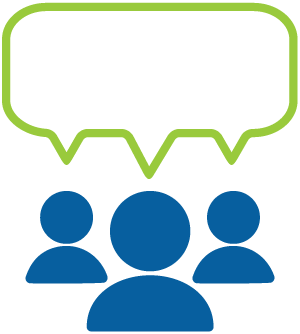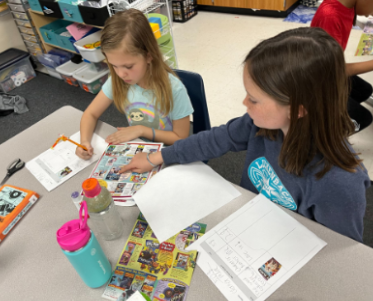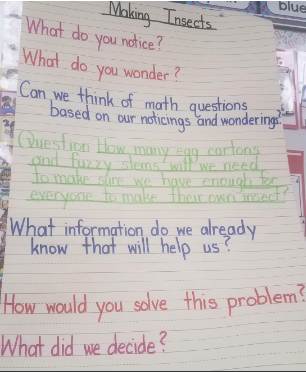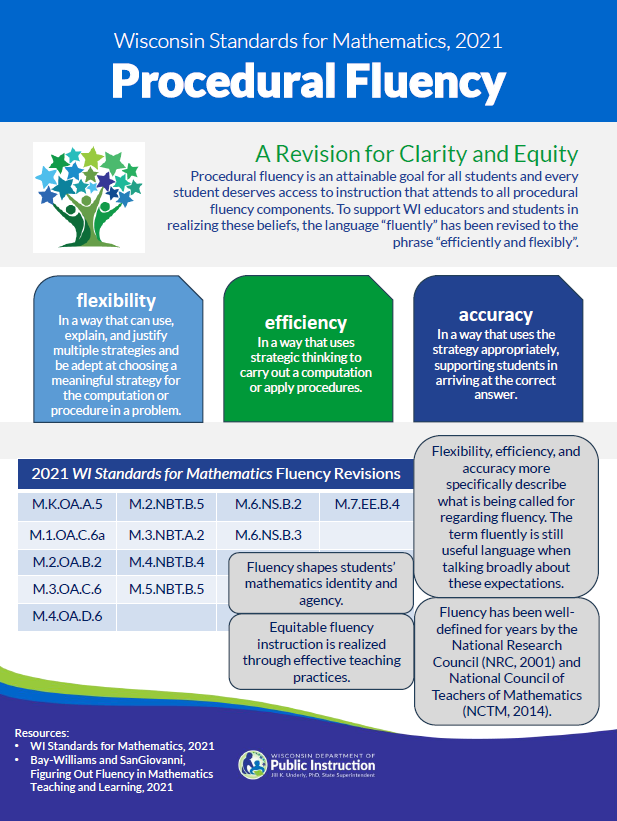Illustrating Standards Through Tasks
WI Standards for Mathematics specify what students should know and be able to do in the classroom. These standards serve as goals for teaching and learning. Tasks, on the other hand, prompt educators to think about students “doing” the mathematics as they learn, supporting WI’s belief that we are teaching students mathematics, not simply teaching mathematics.
Curriculum-based professional learning describes the importance of using student tasks from a school or district’s high-quality instructional materials (HQIM) as part of teacher learning experiences. The pairing of HQIM and professional learning that supports teachers in using the materials is critical.
For some conversations, a concise set of tasks may be helpful to see one full year of mathematics at a glance. Math Milestones by Student Achievement Partners show the most important mathematics of each grade level (K-8) as a set of tasks that fit on one page. These cognitively demanding, low floor - high ceiling, asset identifying tasks can support educators in seeing student thinking within the most important kinds of problems of the grade level.
Go to Achieve The Core: Math Milestones to find a multi-part blog series that highlights different ways these grade level tasks can be used to support student success.
Mathematical Modeling
 Wisconsin educators participated in a 2023 K-5 Elementary Mathematical Modeling professional learning opportunity highlighting how the modeling process can advance equity and strengthen teaching. The foundational modeling tasks, routines, and tools from this learning can be found at www.eqstemm.org. As a culminating activity, WI educators wrote and enacted a mathematical modeling lesson with their students. Go to https://wlresources.dpi.wi.gov/ and join the Mathematical Modeling group to find inspirational lesson contributions.
Wisconsin educators participated in a 2023 K-5 Elementary Mathematical Modeling professional learning opportunity highlighting how the modeling process can advance equity and strengthen teaching. The foundational modeling tasks, routines, and tools from this learning can be found at www.eqstemm.org. As a culminating activity, WI educators wrote and enacted a mathematical modeling lesson with their students. Go to https://wlresources.dpi.wi.gov/ and join the Mathematical Modeling group to find inspirational lesson contributions.
Wisconsin educators are currently participating in a Math Modeling in the Middle Grades expansion of the EQSTEMM learning. In additoin, CESA consultants and Big 5 school district representatives are beginning a facilitation learning series and will provide a local Elementary Mathematical Modeling offering in 2024-2025 based on the EQSTEMM materials. Watch for one of these amazing opportunities near you!
Providing students with regular mathematical modeling experiences is one important way that educators can support students as flexible users of mathematics who see how mathematics can be used to understand their world and the world around them (WI Shift #2).
Read what Wisconsin educators had to say about their experience:
“This practice allows ALL students to participate and feel success in math … and lets students who see the world differently … share their thoughts and let us learn from them.”
“(Math modeling) led to much higher engagement and excitement as (students) figured out ways to answer questions they were wondering about.”
“I see math even more (places) than I did before and I know my kids do also.”
The 2021 revisions to WI Standards for Mathematics more explicitly elevate mathematical modeling as a K-12 progression, including grades kindergarten through grade 8. See Appendix 4 for more information on mathematical modeling as an iterative process, with connections to other content areas, and as a K-12 progression of learning.
What is Fluency and Why Does it Matter?
Procedural fluency is an attainable goal for all students and every student deserves access to instruction that attends to all procedural fluency components. To support Wisconsin educators and students in realizing these beliefs, the language “fluently” in the Wisconsin Standards for Mathematics, 2021 has been revised to the phrase “flexibly and efficiently”.

Click on this Procedural Fluency one-pager to find a description of the what and the why behind the WI Standards for Mathematics revisions related to the large umbrella of procedural fluency. The revised content standards are listed by domain. In addition, language changes, equitable instruction connections, and the sources that were the basis for the revisions are included.
“Fluency applies to virtually every procedure in mathematics, from operations with whole numbers through all rational numbers, finding equivalents, making conversions, solving equations, and so on. Fluency might be thought of as a confluence of the domains” (Bay-Williams and SanGiovanni, Figuring Out Fluency in Mathematics Teaching and Learning, 24).
Click on this Fact Fluency one-pager to find a document that goes deeper into the standard revisions that specifically provide expectations for fact fluency as a subset of procedural fluency. Big picture connections between fact strategies and mathematical reasoning as well as student agency are provided. Revised language for some content standards and a brand new grade 4 standard are described.
“Effective teaching ensures that each child understands how to use relevant strategies and also has ample opportunities to choose among strategies. Learning different strategies opens the door to procedural fluency; learning to choose among those methods allows students to pass through that door” (Bay-Williams and SanGiovanni, Figuring Out Fluency in Mathematics Teaching and Learning, 16).

